 |
|
| Wooden members passing through rows of coil eyes - side view |
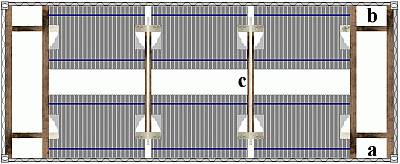 |
|
| Overall arrangement of wooden members - plan view |
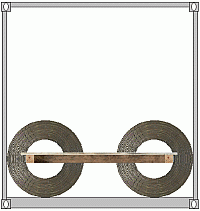 |
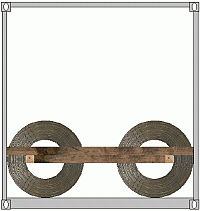 |
|
| Cross-section at c | Cross-section through a and b |
This method is technically relatively simple to implement.
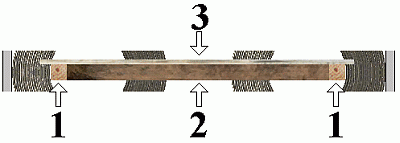 |
|
| Detail of sideways acting bracing |
The squared lumber members (1) passed lengthwise through the coil eyes are pressed apart by the squared lumber member (2) fitted crosswise between them. This wooden member is held in place by the board (3) nailed onto it. This securing method on the one hand results in the formation of a compact block and on the other prevents the coils from rolling, so preventing overloading of the container walls. Without this "braking" action, the container side walls would be subjected to excessive loads.
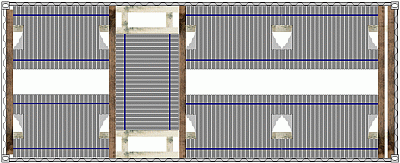 |
|
| Packing and securing variant with seven wire rod coils |
Packing and securing means should be decided before loading by means of appropriate stowage planning.
Heavier wire coils in box containers
This diagram indicates what additional measures may be required.
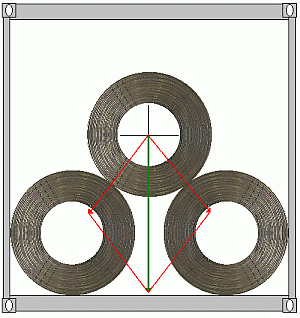 |
Aluminum wire coils packed in the cantline |
The lower layer is subjected to additional forces due to the "angle of rest" of the upper layer. Since the coils can roll apart, the container walls will be exposed to the entirety of the forces which can arise from acceleration of shipment. If this type of packing is to be used, some way must be found to relieve the load on the container walls. This could be achieved by loop lashings passed through the eyes of the bottom pair of coils.